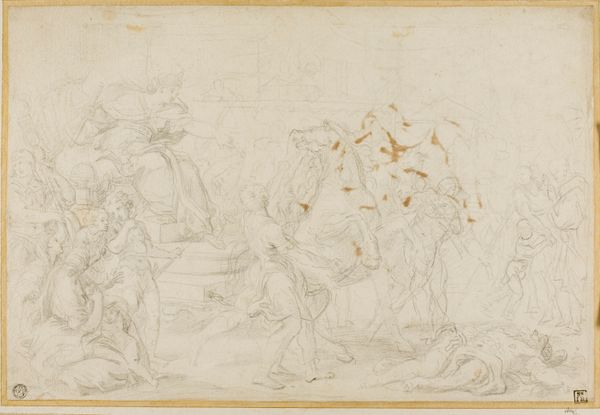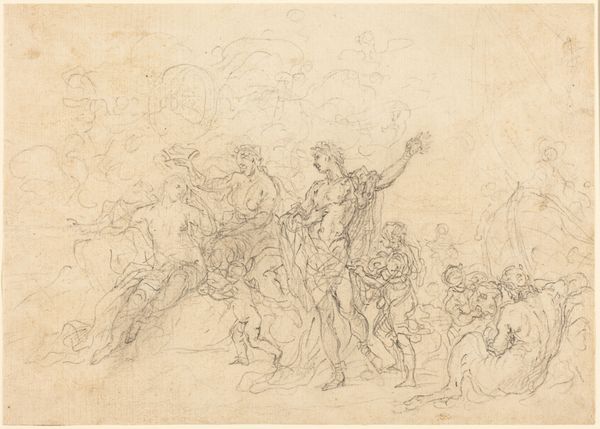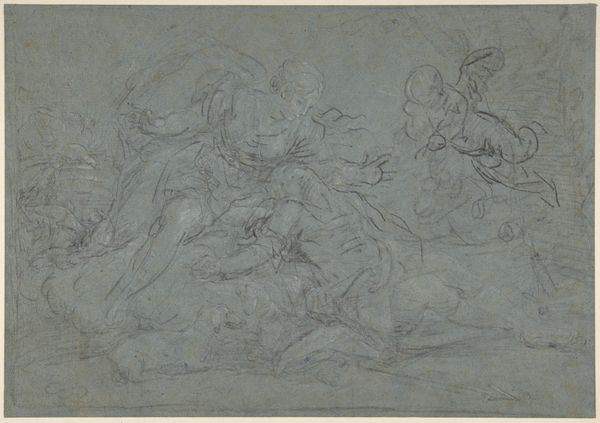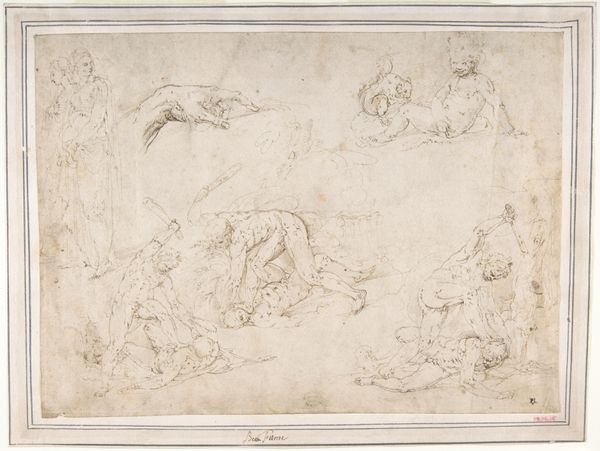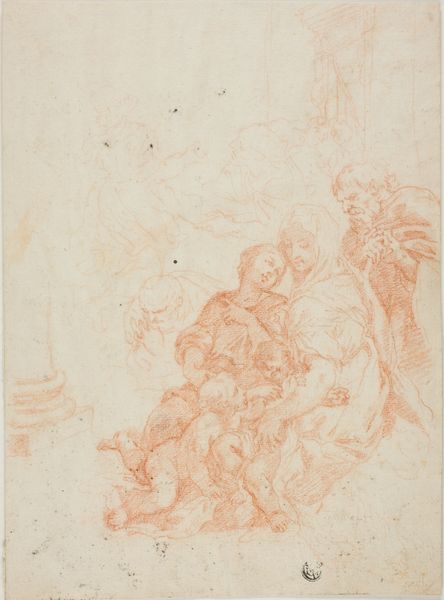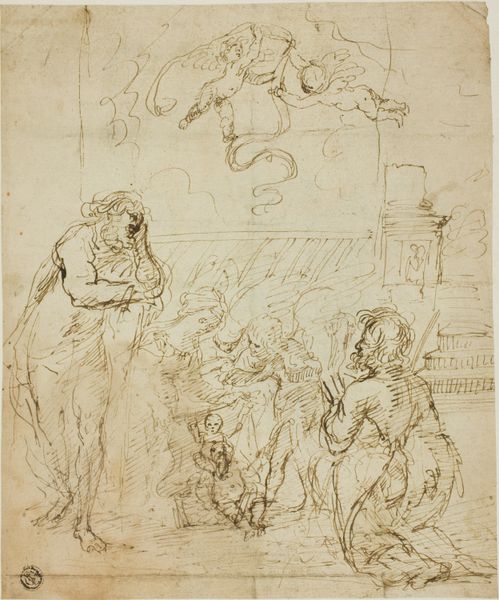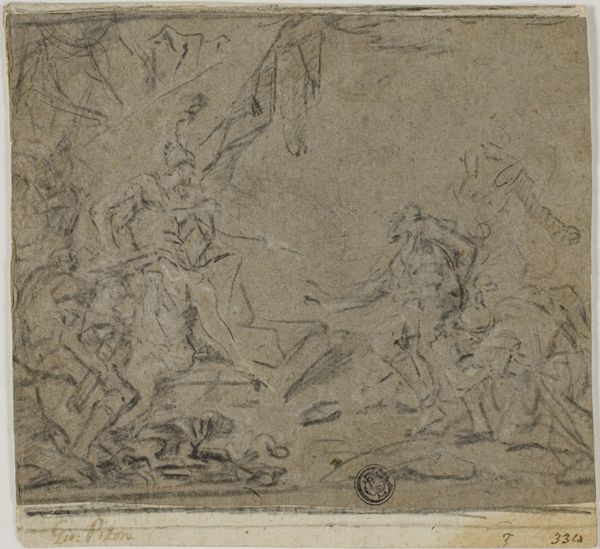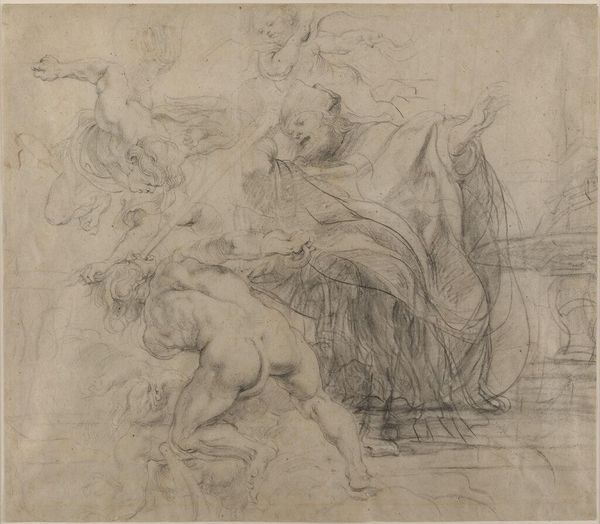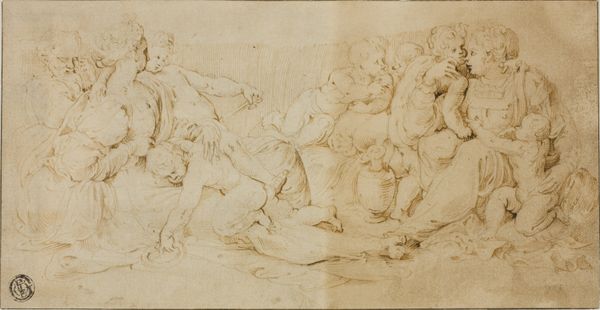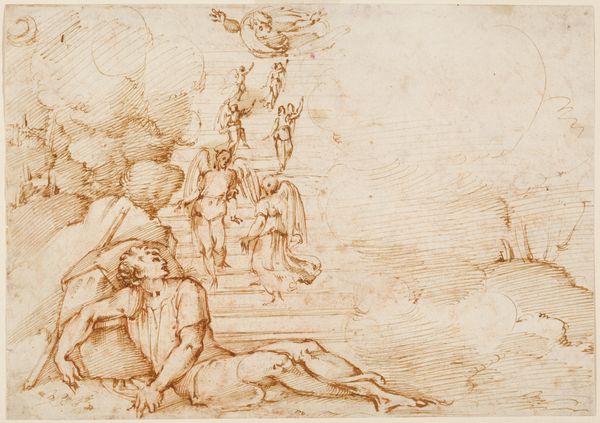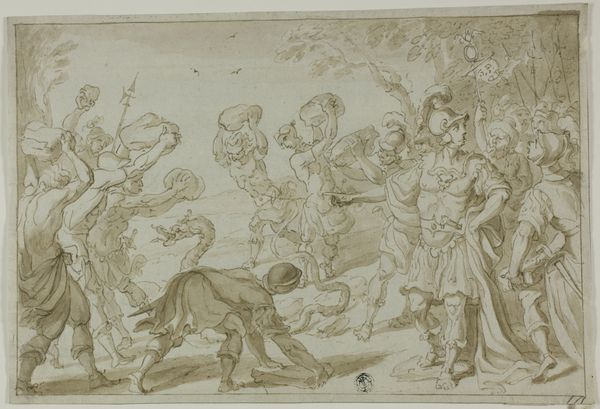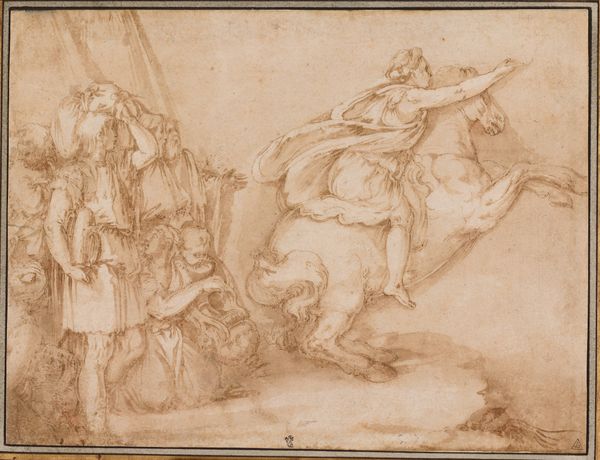![Seven Figures Witnessing an Ascension [verso] by Donato Creti](/_next/image?url=https%3A%2F%2Fd2w8kbdekdi1gv.cloudfront.net%2FeyJidWNrZXQiOiAiYXJ0ZXJhLWltYWdlcy1idWNrZXQiLCAia2V5IjogImFydHdvcmtzL2RkYWU1NTU3LTRjODgtNGUxMi05OWFiLTUwNjA2YjAyODg2Yy9kZGFlNTU1Ny00Yzg4LTRlMTItOTlhYi01MDYwNmIwMjg4NmNfZnVsbC5qcGciLCAiZWRpdHMiOiB7InJlc2l6ZSI6IHsid2lkdGgiOiAxOTIwLCAiaGVpZ2h0IjogMTkyMCwgImZpdCI6ICJpbnNpZGUifX19&w=3840&q=75)
drawing, ink
#
drawing
#
narrative-art
#
baroque
#
etching
#
figuration
#
ink
#
history-painting
Dimensions: overall (approximate): 18.4 x 12.9 cm (7 1/4 x 5 1/16 in.)
Copyright: National Gallery of Art: CC0 1.0
Curator: This drawing, titled "Seven Figures Witnessing an Ascension," is by Donato Creti, rendered in ink. Editor: The initial feeling is of ethereal movement, but it’s obscured—wispy lines fading in and out, like a fleeting vision only half-remembered. Curator: Creti's choice of ink on what looks like laid paper speaks to a workshop practice, likely a study. The accessibility of these materials—ink and paper, both relatively inexpensive—suggests this wasn’t meant to be a final, polished piece, but rather a preliminary exploration. Editor: From a formal standpoint, the composition guides the eye upward, the figures on the left reacting to the central ascending form. I’m drawn to the contrast between the heavily shaded, almost frantic gestures on the left and the faint, more serene shapes in the supposed ascension. Curator: Consider the context of Baroque art—often commissioned by the Church or wealthy patrons, religious themes were common, and Creti certainly produced a number of paintings with similar themes. So how might the use of more accessible material and rapid linework have influenced his ability to access and express such commissions and themes? Editor: Perhaps, but I wonder if the very open quality allows for a richer reading. The viewer has to complete the image, fill in the gaps. What looks unfinished offers, in a way, a greater sense of the miraculous, less defined by dogma and more by personal interpretation. Curator: Right. So the unfinished quality creates the affect of “miraculous”. If these were paintings within formal Church spaces and narratives, what do you suppose the artist hoped to evoke among their congregation? What were the socioeconomic variables they had to negotiate in Baroque Italy? Editor: Interesting to think about. The interplay between labor, material, and religious imagery offers a more comprehensive understanding, doesn't it? Curator: Indeed. Considering both the means of production and the compositional elements, a richer interpretation emerges.
Comments
No comments
Be the first to comment and join the conversation on the ultimate creative platform.
